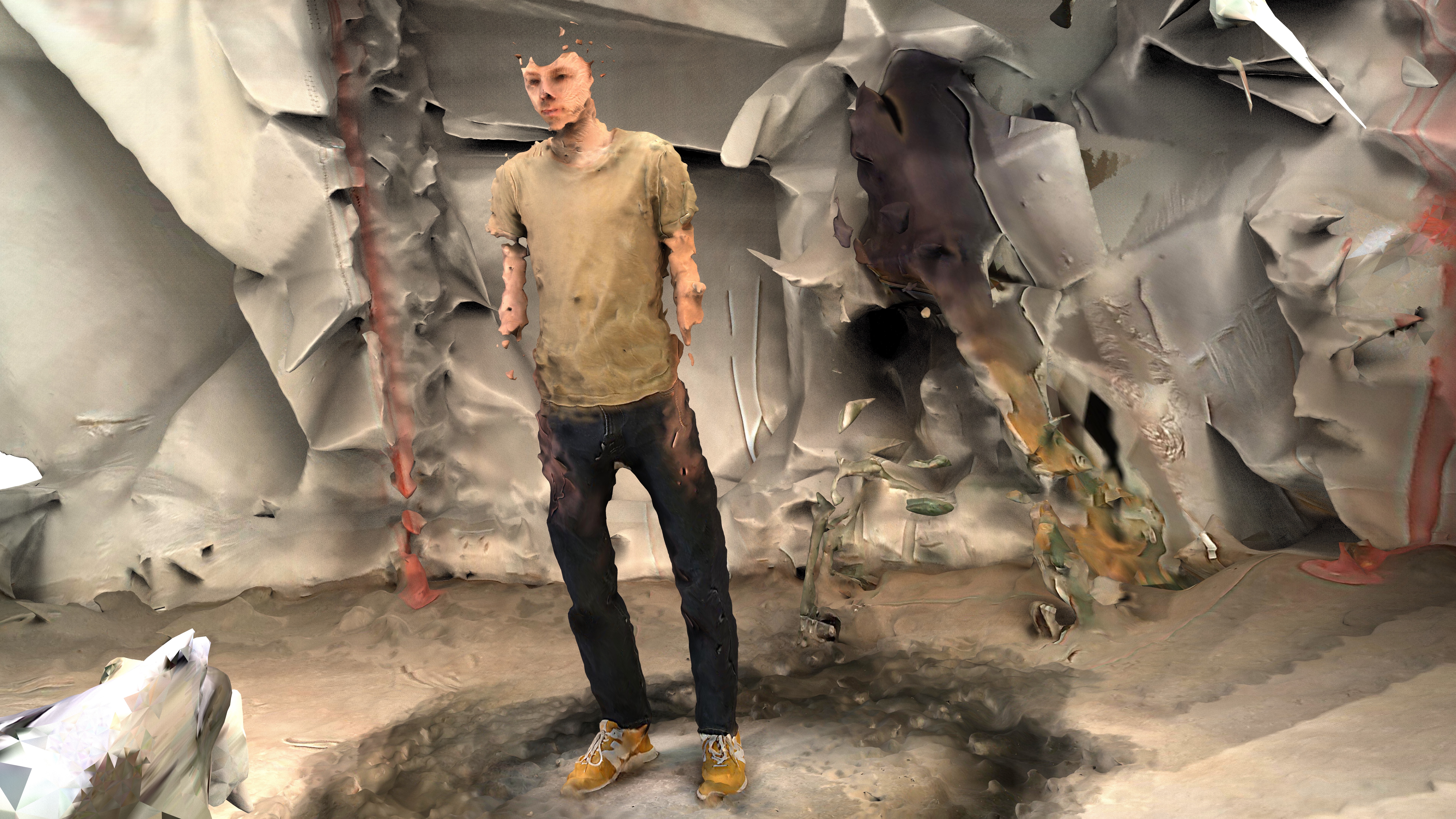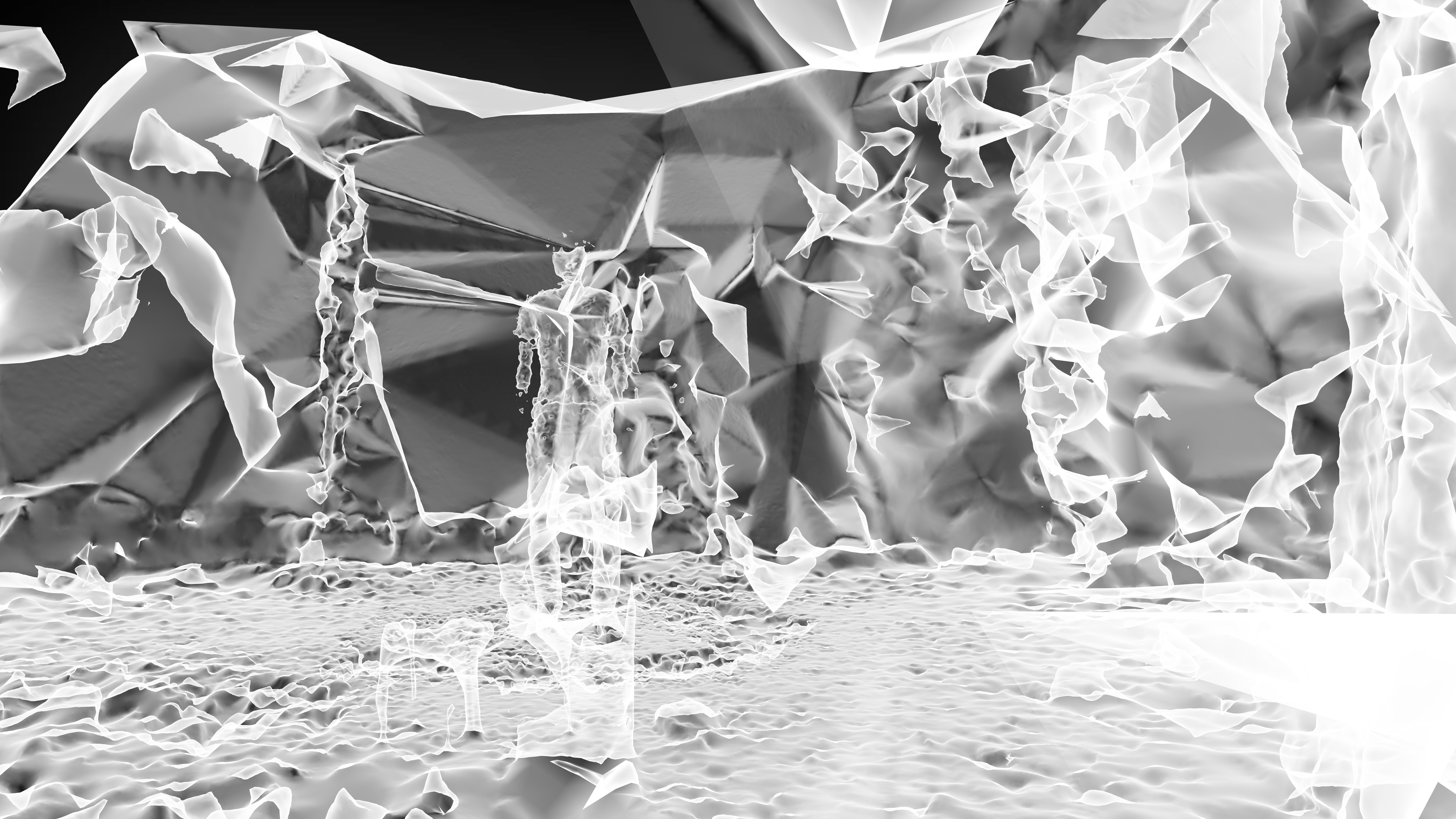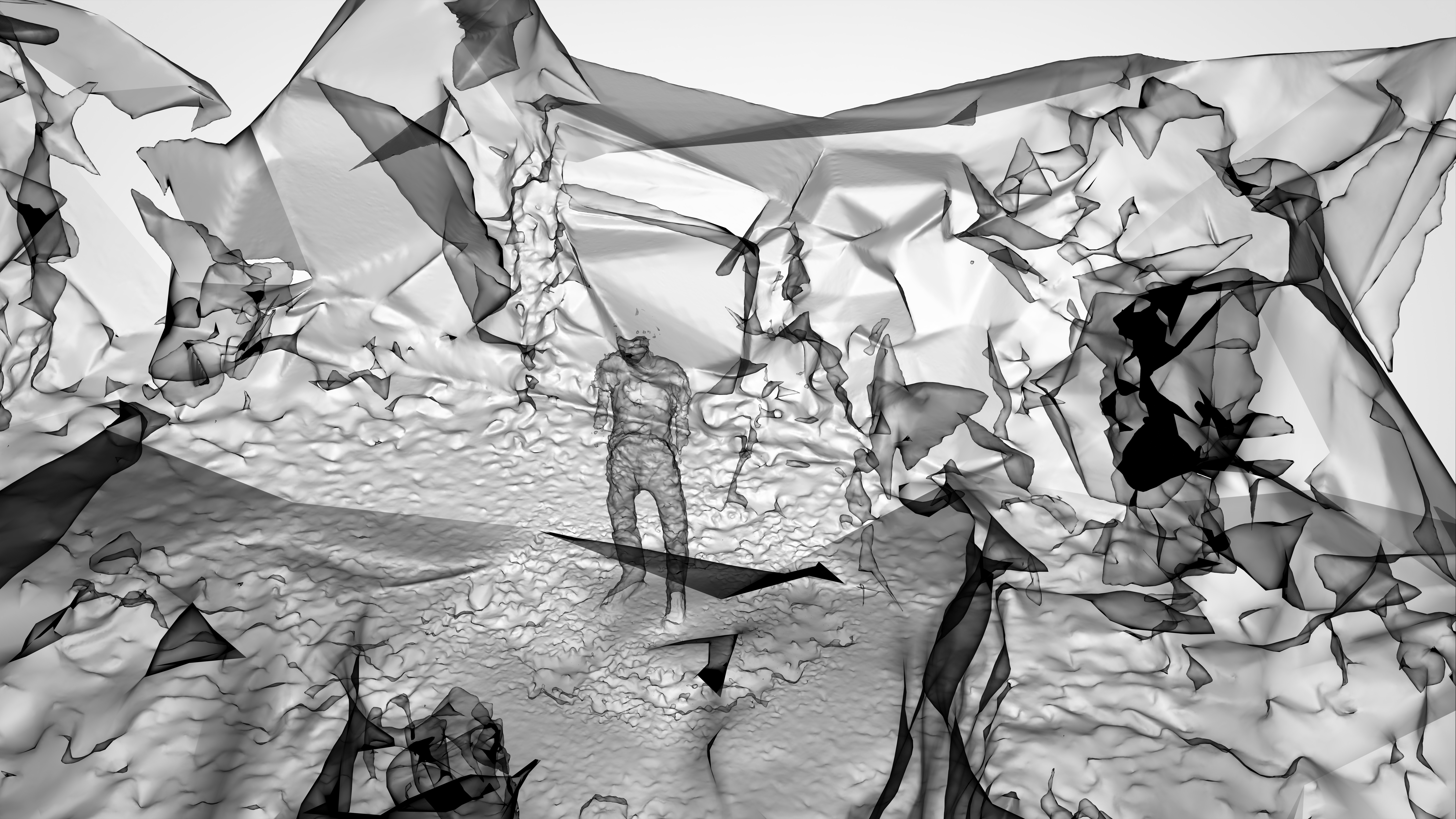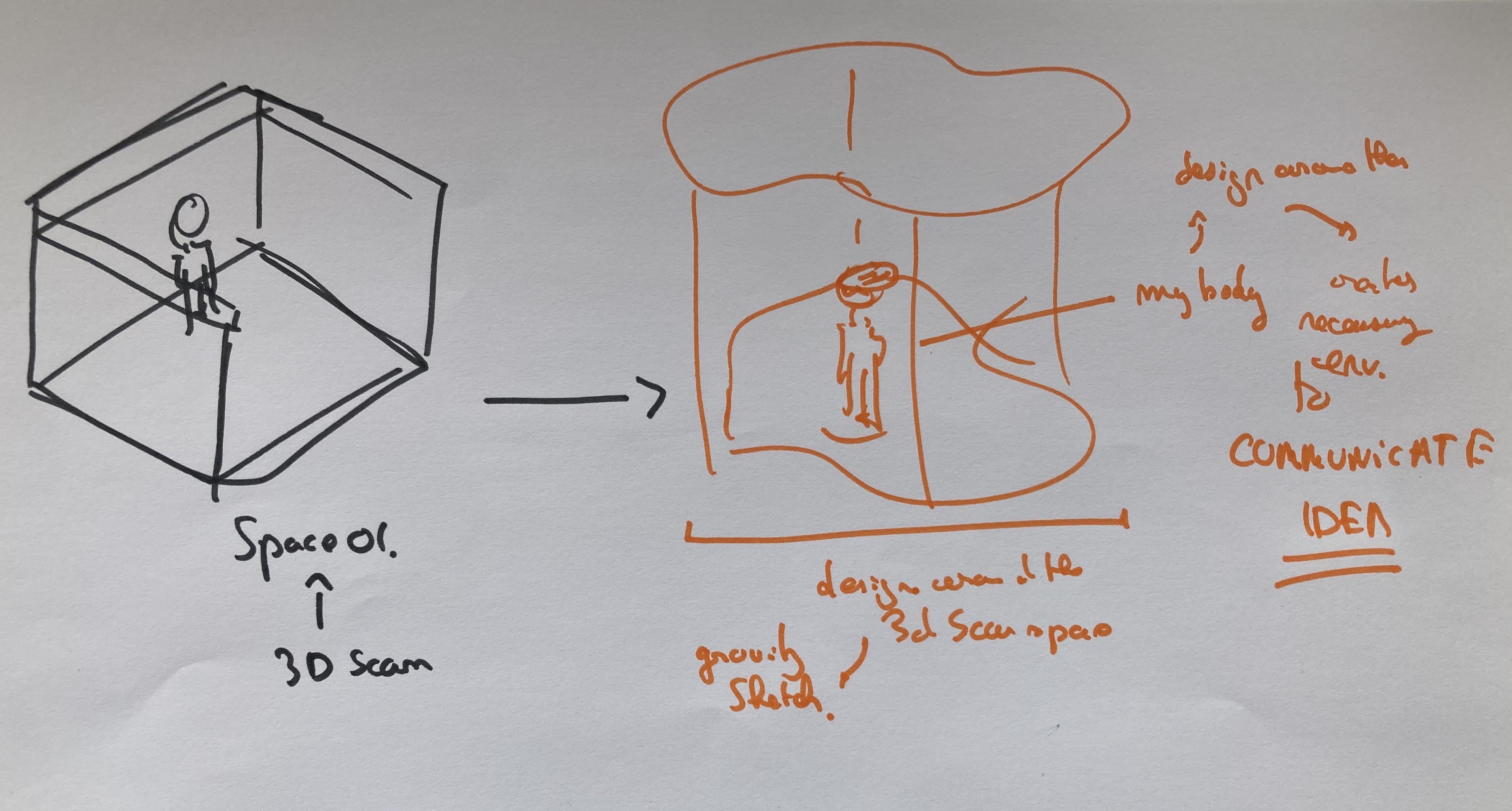Body_Scan
Researc | ongoing project | VR

There is significant potential in exploring 3D scanning of the human body and transferring the scans into virtual reality environments for design and ideation. It is fascinating to discover what innovative and compelling spaces can emerge from experimenting in these new creative mediums. Pushing the boundaries of these new technologies enables unforeseen possibilities for artistic expression and product design.
Transferring 3D scans into an immersive VR space offers an opportunity to craft experiences that would otherwise be impossible in the real world.





3D scanning and VR can be used in the following contexts:
- Prototyping fashion designs: Designers can scan models wearing garments and view, adjust, and iterate on designs in an immersive virtual space. This enables rapid prototyping and reduces the need for physical samples.
- Interior architecture and spatial design: Interior designers and architects can scan rooms or buildings and recreate them in virtual reality to experiment with layouts, lighting, decor, and furnishings. Clients can walk through and experience the space as if they were there in person.
- Product design and testing: Product designers can scan objects and recreate them in VR to test ergonomics, usability, and make rapid design changes before creating physical prototypes. They can also conduct user testing in VR to gain valuable feedback.
- Medical applications like surgery simulations: Surgeons and medical students can practice procedures in a virtual operating room using scanned replicas of patients and organs. This enables training and practice in a safe space.
- Gaming and entertainment: Game developers can scan real-world objects and locations to create ultra-realistic virtual environments and gameplay experiences. This pushes the boundaries of immersion in virtual worlds.



